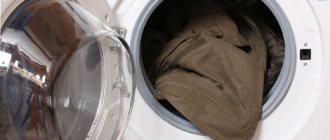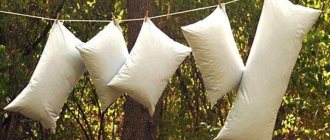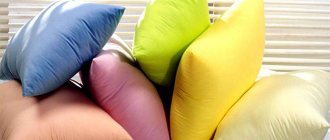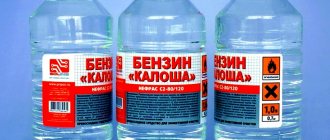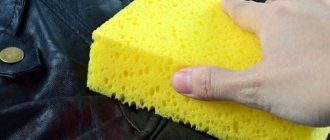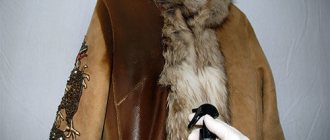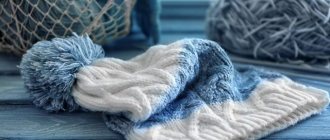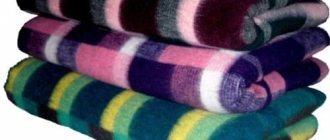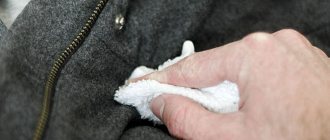In recent years, artificial holofiber filler has become widespread in our country. Even adherents of natural materials increasingly prefer products made from light synthetics. Such things are hypoallergenic, easy to wash, do not deform and weigh very little compared to those made from down, fur and wool. But they still require proper care.
Every owner sooner or later faces the question of how to wash a product filled with holofiber - a pillow, blanket, winter jacket, down jacket - and do it correctly. Find out all the nuances and secrets of this process from our article.
How to wash holofiber: basic rules
Hollofiber is a synthetic non-woven fiber developed by Russian scientists in 2005. It is a large number of hairs that are empty inside and twisted with each other at high temperatures. Because of such manipulations, holofiber looks like many small springs. The industry produces the following types of material:
- balls - they are used to fill blankets, pillows, and handmade toys;
- canvas - it is used when sewing insulated clothing;
- slabs - used in construction to insulate roofs, corners, balconies, walls, windows, floors, etc.
Increased resistance to mechanical, physical and other influences, inexpensive price, hypoallergenicity - just a small list of advantages that characterize holofiber. Washing it is also not inconvenient. Still, there are certain recommendations:
- It is best to wash things by machine with a liquid detergent and use the additional rinse function.
- When washing, you should consider what the outer material is made of. The filler can withstand the most active effects and temperatures up to 90 degrees.
- Holofiber cannot be machine washed separately. If necessary, it should be placed in a pillowcase that is tightly fastened with buttons or a zipper.
- The material does not lose its properties when using aggressive stain removers, chlorine and solvents, but they should be used with caution.
- It is best to dry items outside. If the filler layer is too thick, it is advisable to separate it and dry it in parts in pillowcases.
A little about the properties
This filler is easy to care for, easily restores its shape after any mechanical stress, and serves faithfully for a very long time. What is holofiber? This material consists of synthetic fibers that have a spiral shape and a hollow structure. Therefore, it is also very light, elastic and has excellent thermal insulation.
Since this is a completely synthetic material, mites or fungi do not like it at all. The fibers are connected to each other without glue using a special thermal method, so holofiber is environmentally friendly and hypoallergenic.
How to wash a jacket by hand and in a washing machine
Products with such filler are the easiest to care for. Some property owners doubt whether holofiber can be washed in an automatic washing machine. Practice has shown that it tolerates cleaning well under any mode, spinning and drying. The only thing you should pay attention to is the outer fabric of the product. We will consider the subtleties of handling different types of materials further.
In general, there are several general recommendations on how to wash holofiber in a washing machine and by hand.
With the manual method:
- Fill the container with water and dissolve the detergent in it.
- The products are soaked for 30 minutes.
- Without crushing it, it is taken by the corners and actively moved from side to side.
- The soap solution is then drained, clean water is collected, and the procedure is repeated.
- Finally, hang it to drain and dry.
By machine method:
- Broken seams in products are sewn up, buttons, zippers, and hooks are fastened.
- The item and several wash balls are placed in the drum of the machine. They will help knock out the dirt.
- Next, add detergent. It is enough to take just a little, as it foams very well in the porous material.
- The washing mode for jackets and toys is set to “Delicate”, for pillows and blankets the “Cotton” program is used.
Advice: do not get carried away with washing products with this filler too often, otherwise they may lose their original shape, as well as their properties to retain heat and elasticity.
Features of cleaning membrane clothing
Membrane fabric appeared relatively recently. Initially, ski and sports suits were made from it, and later casual wear. Most often, the material is used for sewing winter overalls for children. In combination with holofiber insulation, it makes outerwear so light that the weight of a jacket, for example, is not felt at all on the body.
Previously, it was believed that it was not recommended to wash the membrane. The statement has long been outdated, since technology makes it possible to obtain fabric that is very wear-resistant. But there are recommendations that should be taken into account when caring for such things.
- This material is cleaned manually or in a delicate mode at temperatures up to 40 degrees.
- Soft liquid products are best suited for washing. Regular powder can negatively affect the structure of the fabric.
- Stains can be removed by rubbing them with soap and rinsing thoroughly.
- It is prohibited to use chlorine-containing products - stain removers, bleaches, air conditioners.
- The material cannot be ironed.
- During drying, avoid radiators and direct sunlight.
In the case of hand washing, it is necessary to remember that the fabric should not be allowed to wrinkle, otherwise it will lose its shape and presentable appearance. Apply the material with a soft sponge. Then rinse the product in the shower, hold it by the shoulders, allowing the water to drain, and wrap it in a large terry towel. As soon as the excess liquid is absorbed into the dry fabric, the clothes should be laid out on a flat surface and all possible wrinkles should be straightened out.
When cleaning in an automatic machine, be sure to turn off the spin and dryer, and fasten the item with all zippers and buttons. If desired, you can hide it in a special laundry bag. After completing these manipulations, proceed in the same way as when processing by hand.
Tip: for greater durability, after drying, the membrane is impregnated with special purchased products.
Features of raincoat fabric
Raincoat is a water- and airproof fabric. It makes excellent items for protection in wet weather. Very wear-resistant, lightweight and durable.
- It is better to wash the fabric in warm water, up to a maximum of 45 degrees.
- Do not use bleaches or aggressive substances.
- If the raincoat fabric is made of fleece, it should be cleaned with a mild liquid detergent in warm water (for example, shampoo or composition for delicate fabrics).
- You cannot wrinkle, twist, or vigorously rub the raincoat fabric. When washing in a machine, turn off the spin function.
- Ironing is not allowed. If necessary, the fabric can be steamed.
If you are not sure about the quality of the product or its color, it is best to clean the material in cold liquid (up to 25 degrees). After this, the item should be rinsed in several waters to avoid streaks, hung on a rope to drain the liquid, placed on hangers and straightened out the folds. Possible stains can be removed with ammonia, soap solution, vinegar, and fermented milk whey.
Bolognese fabric
Experts recommend not experimenting and cleaning Bologna clothing exclusively by hand, since the material is extremely sensitive to any mechanical action and can develop creases that cannot be removed. Products are washed in the following order:
- fill the container with water with a temperature of no more than 40 degrees and stir the liquid product in it, lower the product into the solution;
- use a soft sponge to go over contaminated areas (collars, cuffs, pockets);
- Rinsing is carried out several times, changing the water to new one. The latter is performed under flow;
- You cannot wring out or twist the item. The jacket is laid out on a wire rack installed in the bath to allow the liquid to drain as much as possible;
- dry completely by hanging them on hangers or placing them horizontally on a moisture-absorbing fabric. The room should be well ventilated;
- You can't iron bologna. If absolutely necessary, steaming is allowed.
How to wash a product made of polyester or polyester material
Polyester is also an equally popular artificial material. It easily retains its shape, is durable, but requires special handling when caring.
- Polyester items are washed using the “delicate”, “hand wash” or “sport” modes, with rpm not exceeding 400.
- Add liquid gels or powder for delicate fabrics.
- Stains are removed by long soaking in warm soapy water.
- Dry naturally in fresh air or under the influence of a fan.
- Conditioner should be added during the final rinse.
- Products are not ironed, but if necessary, they can be gently steamed using the “silk” mode.
Important: when washing these fabrics, do not use stain removers containing chlorine or bleaches. Regular powder is also not recommended.
Washing jackets made of cotton fabric with synthetic filling
The undeniable advantage of cotton clothing is that it is pleasant to wear at any time of the year. The products tolerate washing and ironing well, although there are also some rules for them. For example, for a cotton jacket with holofiber filling they are:
- The temperature can be safely set from 50°C, and for higher temperatures it is worth checking the information indicated on the product label. The more natural the cotton fabric, the more it shrinks when heated.
- Cotton items of different colors are washed separately. Colored ones tolerate temperatures that do not exceed 60 degrees. A fade test should be performed before washing. To do this, you need to wet any area of the product, wrap it in a dry white cloth and squeeze it out. If traces remain, the item will have to be washed separately from others in cool water.
- Powders with granules and liquid gels are allowed to be used as laundry detergent.
- A cotton jacket can be wrung out at high speeds or twisted.
- Oxygen bleach can be used to remove stains.
- Cotton items should be ironed from the reverse side at temperatures up to 100°C.
- Clean clothes are usually dried in the shade. And remember that cotton wrinkles and retains traces of clothespins.
Important: when using powder when washing, it is necessary to use the additional rinse function. This is necessary for better rinsing of the filler so that it does not create an unpleasant odor or stains on the main fabric.
How to dry
Although holofiber is not a fussy material, in order to dry it properly, you should also know certain subtleties. If you washed items with balls, completing the process will be as easy as shelling pears: just hang the jacket in a well-ventilated room, or outside in a place protected from the sun.
It is better to dry outerwear vertically, hanging it on a hanger. During this process, the jacket is periodically shaken to restore its shape. The principles of drying holofiber are the same for clothes, pillows, blankets and toys. You should:
- Allow the water to drain naturally. This product requires hanging on a rope or hanger.
- If it is not possible to do this outside, a plastic dryer will help you out, which has enough space for a good gap necessary for air circulation.
- The item should be whisked periodically to ensure uniform distribution of the filler and maximum drying.
- If you need to speed up the process, then at a sufficient distance it is possible to set the heater to the minimum temperature. But it is better to act in this way on things for sleeping (blanket, pillow).
- Carefully read the recommendations for drying outer fabric. Perhaps the best effect will be obtained by drying horizontally on a towel, often replacing it with a dry one.
Drying products
Be sure to let the water drain. To do this, hang the product on hangers or lay it out on terry cloth. After this, take the item out into the open air, but do not expose it to direct sunlight. If this is not possible, dry clothes in a ventilated area. Remember that holofiber dries quickly, but a lot depends on the material that is filled with it. Synthetics, for example, will dry overnight, while membrane fabric will take several days. For jackets and down jackets, use machine drying.
It is preferable to dry in the open air, but if this is not possible, regularly beat the product and knead the filler with your fingers so that it does not clump. If the thing is already damaged, only one thing will help. You need to take out the filler and comb it thoroughly with a wool brush. After this, the product will not be as soft and fluffy as before, but it will last for a long time. If the material is completely damaged, buy the filler yourself and fill the product with it. The price of holofiber is quite low.
How to straighten the filling in a jacket after washing
It happens that when washing, holofiber gets knocked down and forms lumps in one or several places. This can happen due to improper care in the past, due to the effects of time, or due to careless storage in dirty conditions. Don't despair, the product can still be saved. There are several effective tips for this:
- Wash again. If trouble does happen, wash the item again. But now add three or four tennis balls to the drum of the machine. In the process of unwinding, they will hit the product and break the crumpled areas of the filler.
- Straighten. During drying, the holofiber can be periodically unraveled and crushed with your hands, evenly distributed under the lining.
- Knock out. A slightly damp item should be hung on a hanger and fastened with all buttons and zippers. Using a regular carpet beater, lightly pat the clothes and shake them so that the filling fluffs up.
- Vacuuming. An unconventional method that is used on a damp item. We lay out the jacket horizontally and, using the air flow from a vacuum cleaner, carefully straighten the contents.
- Extreme recovery. When the above actions did not lead to a positive result, the time has come for drastic decisions. You need to carefully tear off the lining and sort out the loose areas with your hands.
And remember that it is best to replace a thing with holofiber matted inside with a new one, or use a different filler.
Thanks to our advice, you will quickly and efficiently remove dirt from the things you need, and very soon you will get them clean and refreshed. Holofiber will retain its shape and remarkable properties for a long time, thanks to which your pillows, blankets and clothes will remain light and comfortable. Cheap and weightless, with a minimum of disadvantages, this filler will stay in your home for a long time as part of your favorite and necessary things.
What to do if the filler has lost its shape?
Despite excellent wear resistance and good performance properties, over time, after repeated washings, holofiber can still cake and deform.
You can return your favorite clothes to their former attractive appearance using several methods:
Wash the item in the washing machine, loading at least 6-10 tennis balls into the drum.
As the drum rotates, they will beat the filler well and make it more voluminous.Please note that this method is not suitable for very large jackets with a thick layer of insulation.
- Using nail scissors or a special sewing tool, carefully rip the seams, separating the lining from the top of the down jacket.
Then remove the insulation and brush it with a pet brush. If you don’t have such a brush, you can fluff up the holofiber with your hands.Afterwards you will need to put it back and sew up the ripped seams using a sewing machine.
- If, after removing the filler, it turns out that it has completely lost its shape and cannot be restored, you can purchase a new holofiber at a craft store. The procedure for replacing insulation can also be performed by experienced craftsmen in any sewing studio.
